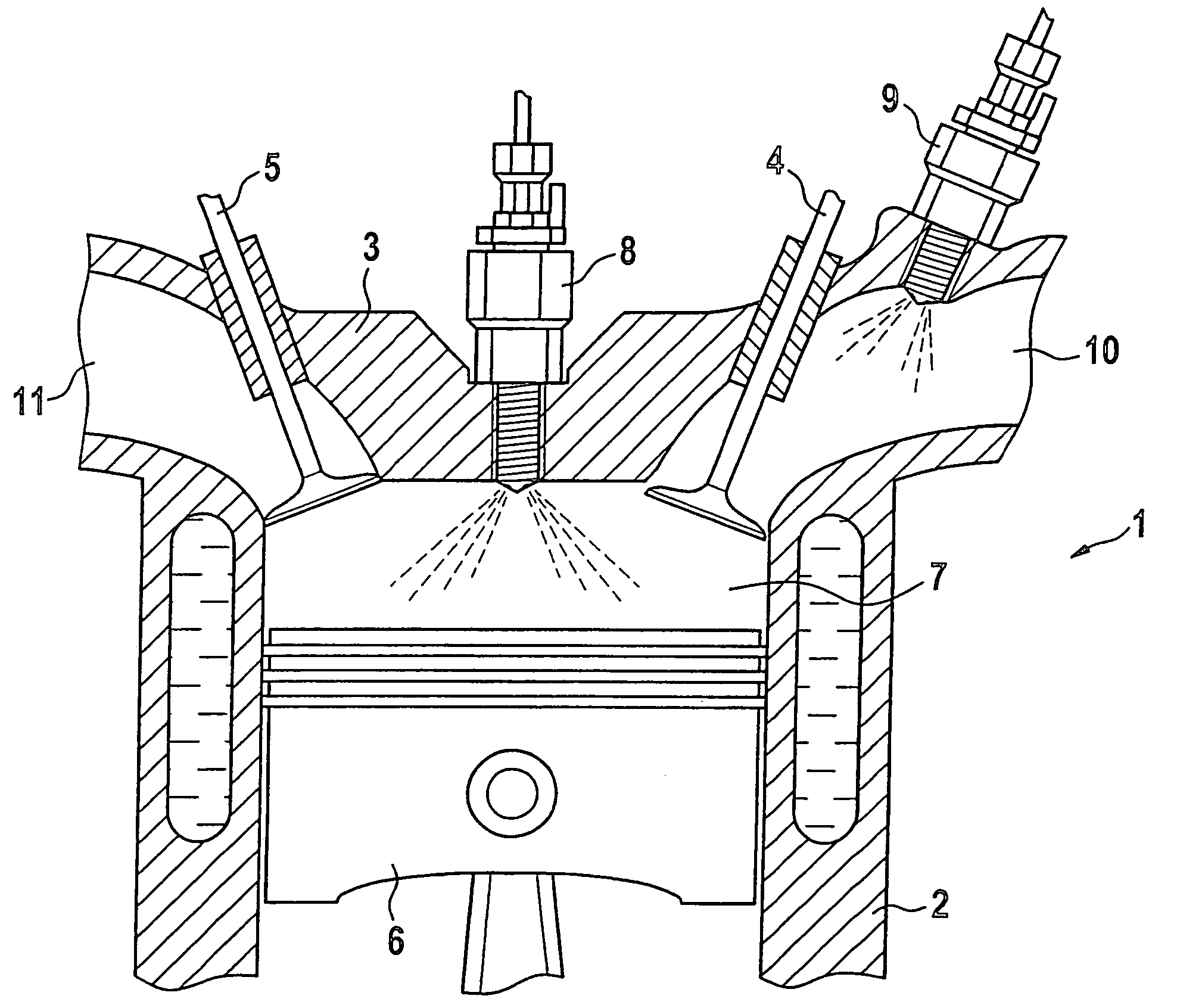Method of operating an internal combustion engine
a technology of internal combustion engine and combustion chamber, which is applied in the direction of machines/engines, output power, electric control, etc., can solve the problems of difficult selective control of combustion described, adversely affecting operation, and higher manufacturing costs of such internal combustion engine, so as to reduce the reactivity of the total cylinder charge, increase the mixture reactivity, and reduce the effect of high burning speed
- Summary
- Abstract
- Description
- Claims
- Application Information
AI Technical Summary
Benefits of technology
Problems solved by technology
Method used
Image
Examples
Embodiment Construction
[0018]FIG. 1 illustrates a cylinder of an internal combustion engine 1 with direct and port fuel injection in which a combustion chamber 7 is formed in at least one cylinder 2 between a piston 6 which is movable longitudinally in the cylinder 2 and a cylinder head 3. The internal combustion engine 1 comprises, per combustion chamber 7, at least one inlet valve 4, at least one outlet valve 5, a first fuel injector 8, a second fuel injector 9 and an ignition source (not illustrated) which is preferably embodied as a spark plug. Furthermore, an inlet port 10 and an outlet port 11 with inlet and outlet valves are arranged in the cylinder head 3. The number of inlet and outlet valves is exemplary and can be increased as necessary.
[0019]The first fuel injector 8 is provided for direct fuel injection into the combustion chamber 7 and therefore projects into the combustion chamber 7. The second fuel injector 9 is arranged in the inlet region and is preferably configured for injecting larger...
PUM
 Login to View More
Login to View More Abstract
Description
Claims
Application Information
 Login to View More
Login to View More - R&D
- Intellectual Property
- Life Sciences
- Materials
- Tech Scout
- Unparalleled Data Quality
- Higher Quality Content
- 60% Fewer Hallucinations
Browse by: Latest US Patents, China's latest patents, Technical Efficacy Thesaurus, Application Domain, Technology Topic, Popular Technical Reports.
© 2025 PatSnap. All rights reserved.Legal|Privacy policy|Modern Slavery Act Transparency Statement|Sitemap|About US| Contact US: help@patsnap.com



